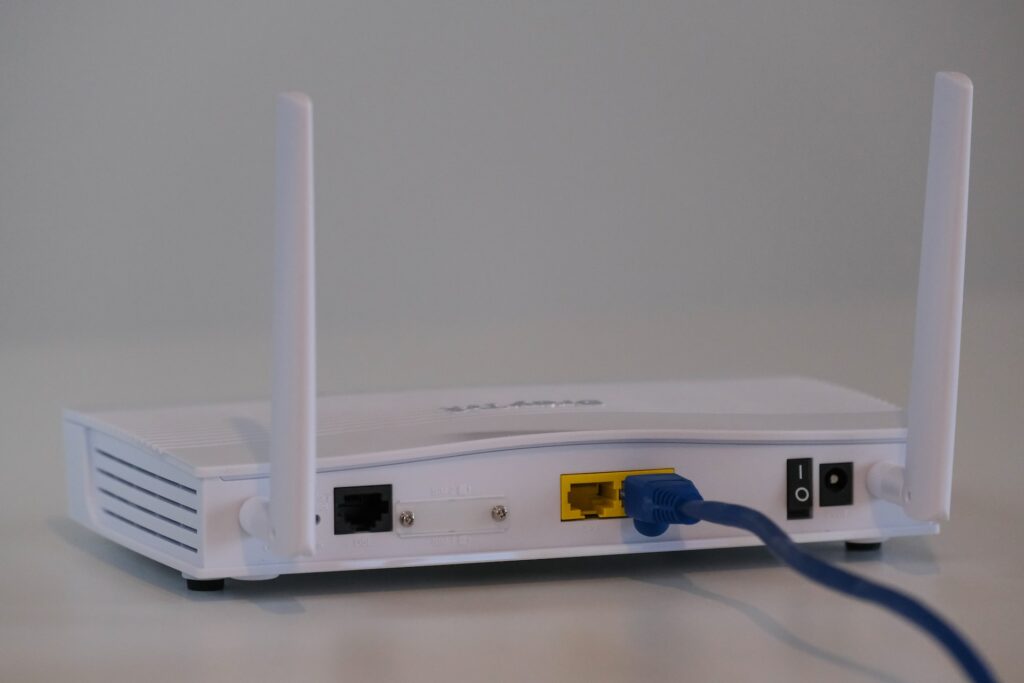In our hyper-connected world, the low battery notification on our devices can send us into a minor panic. A public charging station appears to be a lifesaver when you see it at the airport or your preferred coffee shop. But did you know that using a public charging station to charge your phone or tablet puts your data at risk? Welcome to the world of “Juice Jacking.”
Table of Contents

How Juice Jacking Works
It is a sophisticated cyber threat that capitalizes on our need to charge our devices. It’s a form of cyberattack where cybercriminals manipulate public charging stations to compromise your device’s security, allowing them to steal your data or even install malware. The science behind this is both intriguing and concerning.
Here’s a simplified breakdown of how it works:
1. USB Connections: Most public charging stations use USB connections, which are versatile – they can charge your device and transfer data. This dual functionality is what cybercriminals exploit.
2. Data Transfer Vulnerability: Your device creates a connection with the charging station the moment you plug it into one. In normal scenarios, this connection is used solely for charging. However, cybercriminals can manipulate the USB connection to initiate data transfer between your device and the compromised charging station.
3. Exploitation: Once the connection is established, cybercriminals can execute various malicious activities. They can steal your personal data, install malware or spyware on your device, and gain unauthorized access to your device’s contents.
Common Locations for Juice Jacking
It can occur in various public places and events where people often seek to recharge their devices quickly. Here are some common locations where you might encounter this threat:
- Airports: Busy travelers are prime targets for these attacks, with charging stations conveniently scattered throughout terminals.
- Coffee Shops: While you sip your latte, hackers could be attempting to sip your data by compromising the charging stations.
- Hotels: In your hotel lobby or room, you might find USB charging ports that, unbeknownst to you, could pose a risk.
- Conferences and Events: Large gatherings provide ample opportunities for cybercriminals to exploit the desperation of attendees with low battery warnings.
Real-Life Juice Jacking Incidents
Juice jacking may sound like it would only be seen in a Hollywood cyber-thriller, but that is not the case. The seriousness of this threat has been highlighted by actual instances. Data theft, illegal access to victims’ devices, and malicious software installation through public charging stations have all been reported by victims. Consequences can include major financial losses and breaches involving personal data. Here are a couple of notable cases:
1. DEF CON 2011 Demonstration: In 2011, security researchers set up a booth at the DEF CON hacking conference to demonstrate juice jacking. They placed a charging station labeled “Free Public Charging” that had been modified to infect connected devices with malware. Many attendees fell victim to this simulated attack, highlighting the ease with which juice jacking can occur in crowded events.
2. Los Angeles County District Attorney’s Warning: The Los Angeles County District Attorney’s Office issued a warning regarding the dangers of charging station data breaches in 2019. To lower the risk of data compromise, they advised the general public to stay away from using public USB charging stations and to use AC power outlets instead.
Preventions from this attack
The good news is that you can take steps to protect yourself from falling victim to this attack. Here are some best practices to consider:
- Avoid Public Charging Stations: Whenever possible, avoid using public charging stations, especially in high-risk locations. Instead, carry a portable charger or power bank to keep your devices charged securely while on the go. [Top Pick from Amazon].
- USB Data Blockers: Consider using a USB data blocker, also known as a “USB condom.” These small, affordable devices allow the flow of power for charging while blocking data transfer. They act as a barrier between your device and the potentially compromised charging station. [Here’s a link to a highly recommended USB data blocker].
- Use Trusted Sources: If you must use a public charging station, ensure it’s from a trusted and reputable source. Avoid using makeshift or unverified charging stations.
Charging Safely on the Go
Portable chargers and power banks have become essential travel companions. You may charge your devices without connecting to potentially unsafe public charging stations thanks to these devices that store power. You should purchase a high-quality power bank to keep your devices safe and charged while you’re on the go.
Public Awareness and Education
Perhaps one of the most significant defenses against juice jacking is public awareness and education. Many people remain unaware of the risks associated with public charging stations. By educating yourself and others about the threat of juice jacking and the importance of safe charging practices, you can contribute to mitigating this risk.
The Future of Juice Jacking Threats
Cybercriminals’ strategies change along with the advancement of technology. Even while USB data blocks and portable chargers provide safety today, it’s still important to be on guard and adjust to new dangers. As the IoT expands, a new generation of charging solutions emerges. Cybercriminals can exploit these advancements. The best defense against advancing juice jacking strategies and technologies is to remain informed and proactive.
Conclusion
Juice jacking serves as a stark reminder that convenience can sometimes come at a significant cost in our digitally connected world. By understanding how juice jacking works and taking preventive measures, you can ensure that your data remains secure while charging on the go. Remember, in the battle against cyber threats, awareness and preparedness are your best allies.
FAQs
1. What exactly is juice jacking, and how does it work?
It is a cyber threat where cybercriminals manipulate public charging stations to steal data or install malware on your device while you charge. They exploit the USB connection used for both charging and data transfer to gain unauthorized access.
2. Where are you most likely to encounter juice-jacking threats?
It can occur in places like airports, coffee shops, hotels, and conferences, where public charging stations are commonly available.
3. Are there real-life incidents of juice jacking?
Yes, there have been reported cases of juice jacking incidents, including data theft, unauthorized access, and malware installation via public charging stations.
4. How can I protect myself from juice jacking?
You can protect yourself by avoiding public charging stations, using portable chargers or power banks, and considering USB data blockers to prevent data transfer during charging.
5. What does the future hold for juice-jacking threats?
As technology evolves, new threats may emerge. Staying informed and proactive is crucial to adapting to evolving juice jacking tactics and technologies.




